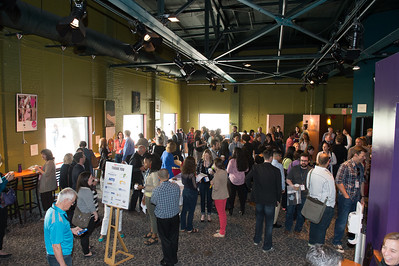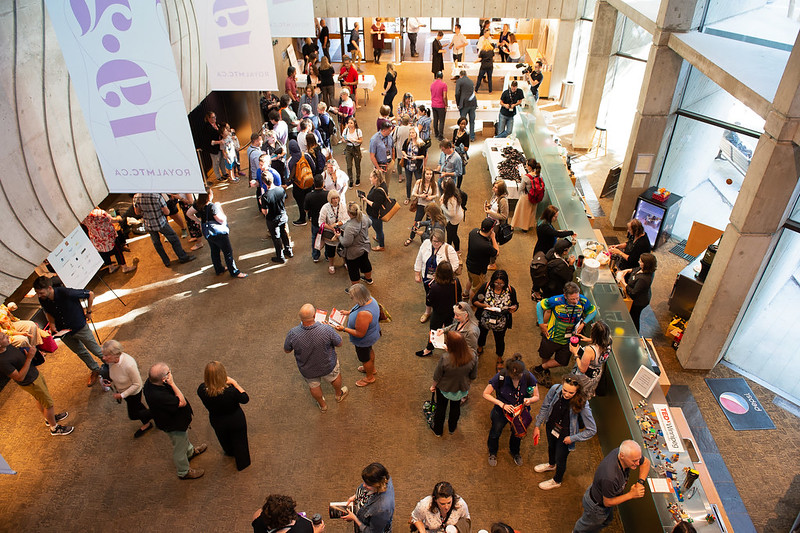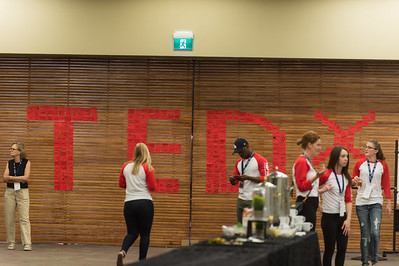I’m back with another blog post about my TEDxWinnipeg speaking experience.
To be honest, writing something while in the middle of the experience feels harder than when I first started. I’m in the “belly of the beast” so to speak: I’m rehearsing my talk regularly, figuring out what my slides will be, and using spare moments to go over my lines in my head.
With that in mind, here are some takeaways from my last few weeks of TEDxWinnipeg prep.
It’s Okay to Get Personal
One of the things I was often told growing up was that talking about personal stuff of any kind was attention-seeking and selfish, so to share deeply personal and challenging things on a stage like TEDx is particularly intimidating.
You see, I don’t talk to most of the members of my family, and the experiences that led me to this place personally also play an important role in my talk. That being said, it’s hard to get up in front of people – even friends and colleagues who you know are rooting for you – and say some of the things that I say in my talk.
It’s hard to admit that your life wasn’t all roses and rainbows, and even though the dark periods in my life shaped me into who I am today, being vulnerable, sharing my experiences, and saying “this is what happened to me” is really intimidating.
However, I’m a big believer in authenticity and honesty, and if I have to work through some tough stuff in order to make my talk the best that it can be, then that’s what I need to do.
Don’t Be Scared of Your Slides
If you’ve seen someone give a talk or presentation before, then you know that adding a series of slides can help enhance and improve someone’s talk. Slides help illustrate complex ideas, lighten the mood, and can be a great way to convey information like statistics.
That being said, I definitely could have had more slides in my initial version of my talk.
Initially I had nine or ten slides, but last week after attending a rehearsal with my speaker buddy, Amanda, and her fellow Speaker Committee volunteers Marney and Kerry, I realized that I could add at least a few more slides which would really help me illustrate my points.
Why was I afraid of adding more slides? If I’m being honest, it’s because I was worried that the more slides I added, the more there would potentially be for me to forget about or mess up onstage.
However, Kerry gave me a really great piece of advice, which went something like:
“You can use your slides as anchor points to help you stay on track and not rush through your talk.”
I didn’t fully grasp this until I went home and started working on my slides again, and I realized that the timing of the ‘clicker’ (remote) could be used for emphasis along with what I was saying.
I’ve always loved acting and being onstage, so being able to reframe my slides as props instead of something else that I needed to pay attention to was really helpful.
Practice, Practice, Practice!
Honestly, the biggest takeaway I can provide right now is: practice your talk like your life depends on it.
Right now I have most of my slides together and my talk is 95% complete – I need to go through it and work through some textual changes (I’m a writer, so I wrote it as I’d read it, not how I’d speak it), but I still need to reference it often to make sure I’m hitting my talking points or citing the right statistics.
Some ways I’ve been rehearsing my talk to try and memorize it to the best of my ability include:
- Reading from my notes and looking at my slides (obviously)
- Walking around and saying what I can remember aloud
- Practicing in front of others (as many people as possible!)
- Recording my talk and listening to it as I go about my day
At the end of the day, nailing this talk is going to come down to a few things: confidence, preparedness, and rehearsals. I’m happy to report that I I feel like I’m well on my way there.









